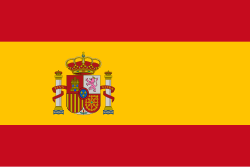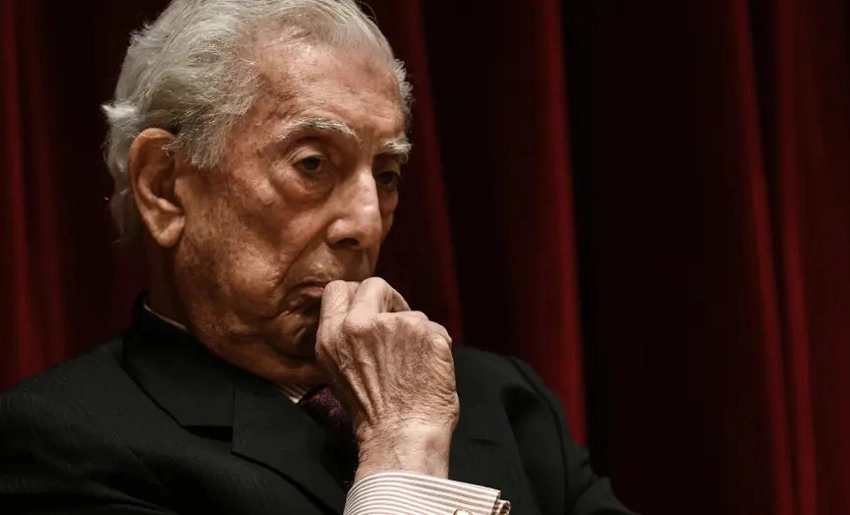On the morning of January 15, 1996. Two months and thirteen days before his sixtieth birthday. Mario Vargas Llosa entered as a full member of the Royal Spanish Academy. An institution that brings together the twenty-three corresponding academies of the Spanish-speaking countries.
He had chosen as the subject for his entrance speech one of the most revealing figures in the essence of Spanish literatura. Someone he had read from a very young age: José Martínez Ruiz. In the shadow of whose pseudonym. Azorín, a work full of originality, elegance and commitment is expanded.
An entity that brings together its members with the twenty-seven letters (both upper and lower case). The new member was given the chair of the L (capital letter): “With it begin some of the words that I love most in the Spanish language – literature, laws, reading, freedom. Because they are emblematic of civilization, and because, like the letter L, they sink their roots in real. Everyday and pedestrian life, but to rise from there to the highest peaks of dream and ideal,” he writes in ‘At the foot of the letter. Fantastic Geography of the Spanish Alphabet’.
A collective book together with the other academics. But let’s go back to the moment when he opens his dissertation to settle into the seat that would belong to him. In it we can see the quality of Cervantes’ student. A sign that, from his first novels, is found in a special way in the impulses of his writing. With regard to the theme chosen for that occasion: «Every time I have reread those vignettes and prints of La Mancha that Azorín wrote in 1905.
While I was touring the landscapes, villages and homes of the region in search of traces of Don Quijote and Sancho Panza. I have felt the emotion that the most beautiful fictions awaken”. There is a figure that will always be the apex of his work when it comes to telling stories: emotion.
By rereading those fifteen little jewels that are knotted in ‘The Route of Don Quijote’ (and which had a Cuban edition in 1970 in the legendary Cocuyo collection). Proposed as a condition of entry into the world of Azorín and its most revealing coordinates. As well as other ramifications, Vargas Llosa delves into the enigmas of the act of writing: “… As a writer, he was able to demonstrate that, if not in life, in art the boring can be entertaining.
The beautiful and the inconsequential transcendent.” Such words, more than the moment of his consecration in the greatest place of the Spanish language. Comfortably define his belonging as a maker. The term so dear to Jorge Luis Borges and his warning: “the gravitation of books.
The serene environment of an order, time stuffed and magically preserved”. To the brotherhood of narrative in the intimacy of the Academy. When they entered it, at that time seven great Hispanic storytellers had their space there: Luis Goytisolo, Gonzalo Torrente Ballester, Miguel Delibes, José Luis Sampedro, Camilo José Cela, Antonio Muñoz Molina and Francisco Ayala.
What are the imperishable characters in Vargas Llosa’s novels?
Their readers do not forget them, quite the opposite. Thus, among so many. I remember the rookie cadet Alberto at the military school in ‘The City and the Dogs’. The smuggler Fushía, the harpist Don Anselmo and Sergeant Lituma in ‘La casa verde’. The young reporter Zavalita, the old patizambo Ambrosio. And the Minister of Government Cayo Bermúdez in ‘Conversation in the Cathedral’; Captain Pantoja in ‘Pantaleón y las visitadoras’. The myopic journalist and the Lion of Natuba in ‘The War of the End of the World’. The old subversive in ‘Historia de Mayta’…
His novels can also take us, with neat fabulation and applied technique. To times and places as dissimilar as the great revolt in the Brazilian backlands at the end of the nineteenth century in ‘The War of the End of the World’. The dark days of the Dominican Republic under the Trujillo dictatorship in ‘La fiesta del chivo’. Paul Gauguin’s pictorial orb between Paris and the South Seas. And her grandmother, the Peruvian fighter for women’s rights.
Flora Tristán, in ‘El Paraíso en la otra esquina’; and the struggles for Irish independence and the colonialist horrors of the Belgian Congo in ‘The Dream of the Celt’. And more: humour, direct and hilarious, or reflective and sarcastic, was no stranger to him. A not inconsiderable part of his novelistic world stands out there as a subject with the highest grade. ‘Pantaleón y las visitadoras’ and ‘La tía Julia y el escribedor’ are two models in this sense.
The first, the tasty adventure of a Peruvian army captain who organizes a troop of prostitutes destined for the garrisons of the jungle. The second, the adventures of a young aspiring writer –Vargas Llosa himself—, his sentimental adventures, and the radio soap operas of a delirious “writer”, Pedro Camacho. Along with the novelist of perfection, the essayist of excellence also occupied the reasons for his life’s work.
Among the dozen books in such a way performance. I would choose a quartet: ‘García Márquez: historia de un deicidio’ (almost 700 pages, the first major study – and perhaps the most punctual – on the work of the illustrious Colombian, which saw the light in 1971). ‘The Perpetual’ (the keys to Gustave Flaubert and his ‘Madame Bovary’).
‘The Temptation of the Impossible’ (a great lesson about Victor Hugo and ‘Les Misérables’); and ‘The Journey to Fiction’ (an X-ray of the narrative horizon of the immense Juan Carlos Onetti). On receiving the 2010 Nobel Prize in Literature in Stockholm, he said: “Nothing has sown so much unrest, stirred so much imagination and desires, as that life of lies that we add to the one we have thanks to literature (…). The lies of literature become truths through us, the transformed readers, contaminated by longings…”
And he closed as follows: “… To continue dreaming, reading and writing, the most effective way we have found to alleviate our perishable condition. Of defeating the worm of time and of making the impossible possible.” In the lineage of Cervantes, and in the prologue to the IV Centenary Edition of ‘Don Quixote of La Mancha’ in 2004. The novelist refers, about the ingenious gentleman and his squire.
That there they are “indissolubly united in that strange alliance that is that of sleep and wakefulness. The real and the ideal, life and death, the spirit and the flesh, fiction and life.” In this direction, Javier Cercas recalled that, “at least in the field of our language. It will take a long time for a writer as great as Vargas Llosa to be born, if at all”. This is how it is worth saying goodbye to Mario, Don Miguel’s disciple.
Translated by Aliani Rojas Fernández
- Maggie Mateo returns as a storyteller - 21 de May de 2025
- Farewell to Mario, Don Miguel’s disciple - 16 de April de 2025
- The savage detective and the unsubmissive translator - 7 de April de 2025

